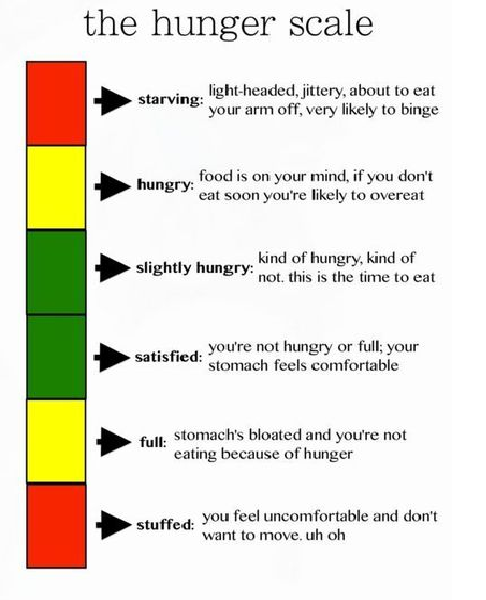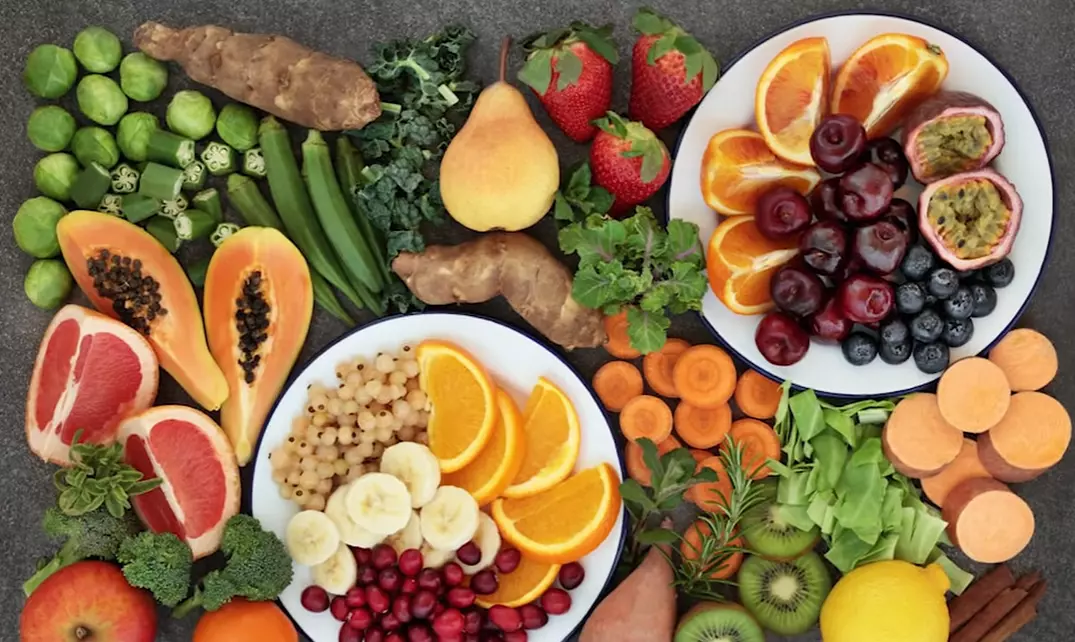Are you a mindful eater? Here’s some food for thought – when was the last time you were thoughtful about your food? Were you really paying attention to your meal? Did you savour its taste or were you chomping it down while watching Netflix? A Satvic lifestyle is not just about what you eat, but HOW you eat it. Because if you’re not eating consciously, you’re inviting a ton of health problems even if you eat the healthiest food.
Do you feel really light after having food? Do you feel energetic from morning to evening? Are you at your ideal weight? If your answer is no to any one of these questions, you’re not eating mindfully.

So it’s time to place awareness at the top of our menu and fix our relationship with food mindfully. In this blog, we’ll be showing you 5 changes you can make to eat more mindfully so you can stay healthy and truly enjoy your food.
1. A mindful eater knows the difference between real hunger & fake hunger
Now you may be wondering – how do I know what’s real hunger and fake hunger? Do you find yourself raiding the kitchen craving for a snack after every 2 hours? You can’t really experience true hunger if compulsive snacking and emotional eating have taken over your life. Your poor digestion fire is overloaded by a mountain of meals and gets extinguished. And if your body can’t digest it, it will stay stuck inside and keep rotting.

Do you know what the best sauce in the world is? Tomato sauce? Schezwan sauce? Soya sauce?
None of them! Your hunger is the world’s best sauce. When you’re really hungry, even simple and plain food tastes amazing. When we eat without hunger, we have to keep adding lots of things to make it tasty. You can only relish your food with a lot of salt, chilli, spices, oil, and lemon. This hunger is about entertaining your senses, not nourishing your body.

What are the signs of real hunger? Real hunger has a voice. If you’re a mindful eater, you can recognize it as a growling sound in your stomach. Think of it like a natural alarm inside your stomach saying – “I’ve finished digesting and I’m ready to be nourished.” You won’t think about demanding your food to be salty, spicy, or tangy when you’re really hungry. You can happily eat a plain cucumber or khichdi when true hunger arises. No tantrums.
2. Eat only when you’re happy, relaxed and comfortable.
Anything you eat while your mind is not at ease is going to become a cause of disease. Yet emotional eating has become a common problem today. Of course, you won’t ever physically feel true hunger when you’re angry, irritated, tensed, or stressed. It’s just that your mind seeks a distraction to cover up the uncomfortable flood of emotions. Now think about this – do we ever complete our list of tasks efficiently when we’re in a mentally disturbed state? No! So how can complete the big task of digestion?

Have you ever sat down to eat and received an emergency call from someone close to you? What happens? Your hunger instantly fades away and is replaced by stress. All the energy is diverted from your digestive system up to your mind. It doesn’t matter if your favourite food is sitting in front of you. You won’t feel like taking a single bite.
It’s not just limited to emergency situations. Be mindful of the ambience in which you eat. Are you eating while watching a violent movie, sad news stories, or engaging in heated arguments? You need to cut out any source of stress and make sure you eat only when you’re happy, relaxed and comfortable.
3. A mindful eater eats using his hands
Forks, knives, and spoons have become a mark of food etiquette and hygiene. But think about this – you always know where your hands have been. All you need to do is consciously wash your hands before every meal. But do you have any idea where your forks, knives and spoons have been when you sit down to eat? It’s a question that makes you scratch your head, doesn’t it?
Our Vedas have always taught us to eat with our hands. Why? Because when you touch your food with your fingers, the nerve endings in your fingers immediately send a signal to your brain that food is about to enter the body. The same signal is sent by your brain to your stomach, intestines, liver, & kidney.
Here’s another one – where did this culture of looking down upon using your hands even come from? It was imposed by the Britishers when they were ruling our nation. Our Vedas have always taught us to eat with our hands. Why? Because when you touch your food with your fingers, the nerve endings in your fingers immediately send a signal to your brain that food is about to enter the body. The same signal is sent by your brain to your stomach, intestines, liver and kidney.

By doing this, all your organs are prepared before food comes into the body. Your stomach starts releasing digestive juices, liver starts releasing bile and intestines start getting lubricated. Another benefit of eating with our hands is that they don’t allow us to eat anything too hot or too cold.
4. Eating only till half of your stomach’s capacity
Have you ever packed your blender with ingredients all the way to the top? What happened when you turned it on? Absolutely nothing! It’s impossible to blend them. Because you always need some empty space to break things down and mix them. Our stomach has the same responsibility of breaking down our food inside our stomach. So why have we made a ritual out of eating till our stomach is full?

In fact, it’s become a way of showing love when our friends and family visit for lunch. We keep insisting our guests to stuff themselves with every single delicacy we’ve prepared for them. Even if they’re not feeling hungry, we still keep pushing or giving in ourselves when they’re offered to us. We’ve been taking the saying “the way to someone’s heart is through their stomach” way too far.
When you feel like taking a second serving, stop for 2 minutes. After 2 minutes, if you still feel like you want that second serving, feel free to eat it.
So what should a mindful eater do? We should only fill our stomach till half its capacity. Leave 1/4th space for the digestive juices and 1/4th space empty for it to churn.
There’s a simple way to know when you’ve eaten enough in case you’re worried about malnourishing yourself. When you feel like taking a second serving, stop for 2 minutes. After 2 minutes, if you still feel like you want that second serving, feel free to eat it. By giving this break, you’ll be able to find out that your body had no need for it.
5. Going back to work immediately after eating
Just because we’re living fast-paced lifestyles, it doesn’t mean we can force our digestion to follow the same pace. Want to know who wins when you make digestion and work compete against each other? Neither of them. One thing is for certain though – you will lose. Because your body can only do one thing properly at a time – digestion work or thinking/study work.
Digestion takes almost 70-80% of your body’s energy. When you get back to work right after eating a meal, a tug of war begins between your stomach and your mind. We feel lazy and feel like sleeping while working and our meal doesn’t digest properly.

In many cultures around the world, shops and offices take a break after lunchtime to ensure that employees can recover their energy and focus on work properly when they come back.
How long should this break last? Anywhere between 10-30 minutes is recommended.
You can even sleep if you want. Be careful not to lie down immediately after eating food. Only lie down after 2-3 minutes or walking at least 100 steps.
If you’re in office, you can simply put your head on the table and rest for 10 minutes. However, if you feel like you can’t afford to take long breaks during office hours, there’s another solution for you.
You can have a light lunch like soup or salad, which can easily be digested. You don’t need to take a break for digesting them.
Tell us which habits have helped you become a more mindful eater in the comments below. Check out our video on how to eat more mindfully on our YouTube channel.




